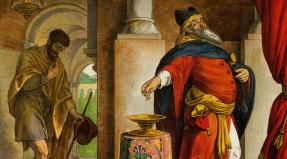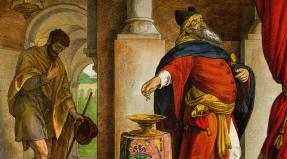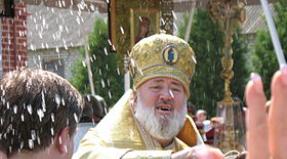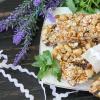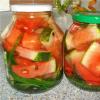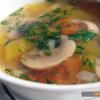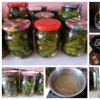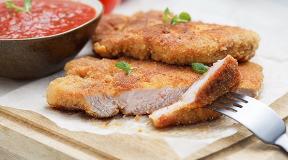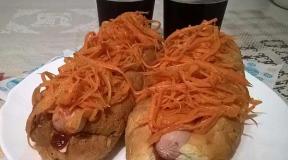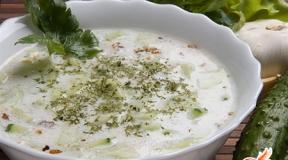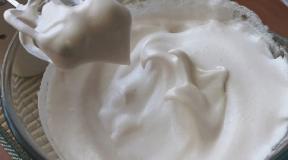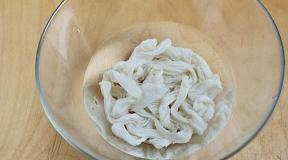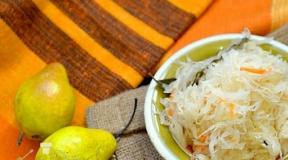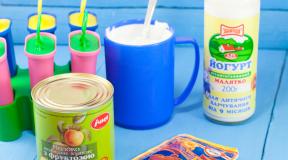Hungarian mangalica Duroc. Hungarian mangalica pig. Description, features, breeding and care of the Hungarian mangalica. Let's move on to the advantages and disadvantages of the breed
At the moment, there are a large number of pig breeds adapted to different climatic conditions. Among them, the Hungarian mangalica stands out. It is characterized by its original appearance and ability to withstand low temperatures, which makes this breed the best for countries with long and cold winters.
The history of the emergence of the breed
The Hungarian mangalica is a long-established breed. The approximate year of its appearance is 1833. It is known for certain that since 1860 Hungary became famous for its new breed, distinctive feature which had surprisingly warm curly fur.
The creation of the breed is attributed to Archduke Joseph. He crossed a wild Carpathian boar with two Hungarian pigs, Bakonyi and Szalontai, and one imported Serbian, Sumadia. The resulting unique curly-haired, or, as it is also called, downy pig, was especially appreciated for its body's ability to produce large amounts of fat.
The breed quickly gained popularity. In Hungary alone, the number of these pigs exceeded 30 thousand. They began to breed Hungarian mangalitsa in Ukraine as well. Central Europe was actively buying fatty meat. But by the middle of the 20th century, lard and pork were out of fashion, more meat breeds for making bacon and ham. In Hungary, the mangalitsa population decreased to 7 thousand heads.
In the 90s of the XX century, producers of deli meats jamon and lomo reported a shortage of quality raw materials. It was then that they remembered about the forgotten breed of amazing downy pigs. The Spanish company Jamones Segovia, S. A.
Since 2000, the Hungarian mangalitsa breed has been recognized as a national treasure of Hungary. Pigs are actively bred and popularized.
In the CIS countries, rare small farms are engaged in the cultivation of Hungarian mangalica, and usually have huge profits. Elite restaurants buy meat and lard from them.
Description and characteristic features of the Hungarian mangalitsa breed
Pigs of this breed are of medium height (up to 85 centimeters in height), have a dense skeleton, a large head. The snout is strongly elongated and slightly bent upward, the patch is rounded, the ears are large, can be extended forward or hang. Legs are straight, short, powerful with black hooves. The abdomen is large, the back may have a deflection.
The first thing that catches your eye when looking at the Hungarian mangalitsa is, of course, wool. It is thick and long, with underpads. During the spring molt, it falls out, and the wool curls into tight rings. Most mangalitsa are off-white in color. In addition to pigs of this color, there are also black, red and mixed colors. It depends on the subspecies.
At this time, producers often sell hybrid pigs, from a mangalitsa and a pig of a different breed. Such individuals will also have a coat, but not the other parameters necessary for successful breeding. Therefore, it is important to know other external characteristic features of the Hungarian mangalica:
- the tail is thickened at the base;
- eyes and hair around them, nipples, lips, patch, anus, the inner part of the tail are dark in color, regardless of the subspecies;
- white tassel;
- Velman's spot (a dark mark at the base of the ears no more than 5 centimeters in diameter), such a mark confirms the purity of the breed;
- no more than 10 nipples.
The Hungarian mangalica wild boar can weigh up to 300 kilograms, and a sow can weigh 200 kilograms. Already in the first year of life, young animals are able to gain 150-160 kilograms. The record recorded weight of an adult is half a ton.
Varieties
The main difference between the breeds is their color. At the moment, there are 4 colors of Hungarian mangalica pigs and 3 subspecies:
White mangalitsa. The most common subspecies. It includes 3/4 of all the current world livestock of Hungarian mangalits. The color can vary from light gray to white with pale yellow transitions to red, while the skin is gray or black.
"Martin". The upper part of the head, ears, snout, jaw, back, sides and outer side of the limbs of the "swallows" are dark in color. Stomach, lower jaw, half of the sides, the inner side of the legs can be white, gray, yellow, reddish-brown.
This subspecies is often smaller than the others, the coat is shorter and coarser, but it is more hardy.
Red mangalitsa. The color of these pigs is bright, in pure representatives of the breed it is without spots and tan. Red pigs are larger than their counterparts and gain weight faster. The subspecies is recognized as endangered. The sale of red piglets to private individuals is prohibited.

Hungarian pig breed white mangalitsa

The breed of the Hungarian mangalica "swallow"

Hungarian pig breed red mangalitsa
Before the reduction in the number of these pigs in Hungary, there were individuals that retained the color characteristic of wild pigs, or gray-brown color.
Advantages and disadvantages of breeding Hungarian mangalitsa
Let's consider the main advantages and disadvantages of this breed:
| Advantages | disadvantages |
| endurance | high price |
| high demand | late puberty |
| high cost of meat and lard | often small farrowing |
| fast weight gain | there is a high probability of acquiring a hybrid pig |
| excellent immunity | need for large pastures |
| ability to adapt | |
| friendly character | |
| able to remember the way home (the pig is able to return from the pasture by itself) | |
| wool protects against insect bites |
How to choose piglets and what is their price?
You should not rely on a buyer, it is better to go and select the animals yourself, because you can be sure of the health of the piglets only by personally examining them. It is better to visit several farms, many of the features will become noticeable only in comparison.
It is especially important to remember that acquired babies should not be close relatives, otherwise the pigs will degenerate.
A real pig of the Hungarian mangalitsa costs at least 15,000 Russian rubles, on average the price varies between 15-20 thousand rubles. It is recommended to purchase several piglets, without the company the animal may become sad, and this will affect the appetite and weight gain.
When buying, you should pay attention to how actively the cub eats, whether its mucous membranes are clean. The piglet should have a large breast, straight legs, the previously described characteristic features of the Hungarian mangalitsa, a striped color, like that of wild relatives, but at the same time the color is inherent in the subspecies of the piglet (white, black, red, "swallow").

A healthy pig will screech violently when picked up.
You should not buy too chubby and large cubs. Usually, a large weight at a young age is the result of feeding with sweet milk. After such pigs, it is difficult to transfer to normal food.
A cross between the Hungarian mangalitsa will most likely also be covered with wool, but its meat is tougher, the greasy layer is less, the character is not so friendly, intelligence and memory are lower.
Doubts about the purity of the breed are subject to individuals of any subspecies, which have a pink belly, no black marks characteristic of all Mangalians, wool has brown tips, ears are too large or too small.
Pigs with white spots on the skin and brown in color, with yellow or black hooves with yellow stripes will be explicitly discarded.
Shades of color can change during the life of the pig, this process is influenced by nutrition and the environment.
The Hungarian mangalica is distinguished by its vitality and the ability to adapt. Even in cold weather, she is able to do without a pigsty. Therefore, many owners do not build premises for pigs of this breed, but simply dig a hole in the pen. But then the body of the Hungarian mangalica will use the accumulated fat to warm it. For a pig to gain weight well, it still needs to create the following conditions:
- insulated pigsty for the winter;
- pen in front of the pigsty;
- drinking bowl with clean water;
- regularly changed straw bedding in the pigsty and in the pen;
- grazing field fenced off from other animals;
- sheds for protection from bad weather in the corral and in the pasture;
- additional heating for piglets and pregnant sows, it is also important to protect them from drafts.
Due to its high immunity, this breed does not need vaccinations.
Hungarian mangalica has a good memory. Therefore, she is able to return home from grazing by herself, and there is no special need for shepherds, especially if predators do not live nearby. The latter, by the way, include stray packs of dogs.
Pigs should be given worms every fall and spring.
Feeding and diet
Hungarian mangalitsa are omnivorous, feeding mainly on pasture. In summer and spring it is common grass, in autumn and winter it is hay. However, for active weight gain, you can enter into the diet of pigs:
- potato;
- corn;
- pumpkin;
- beans;
- zucchini;
- beets;
- acorns;
- chestnuts;
- cereals;
- cane;
- silage;
- red clay;
- bone meal;
- seaweed.
These pigs will not give up food waste, snails, insects, frogs.
It is impossible to overfeed Hungarian mangalits, this breed is prone to obesity. This can lead to a deterioration in the quality of meat and death of the animal.
It is allowed to feed Hungarian mangalitsa with purchased compound feed, but then you still need to give fresh grass or hay. The food is selected depending on the age of the animals.
The owners who care about the naturalness of the meat can prepare the feed on their own. To do this, you need to mix corn, bran, chalk, bone meal, wheat, oats and cake.

Reproduction
Representatives of this breed reach sexual maturity in a year. A sow must gain at least 100 kilograms by this age in order to safely bear offspring. The strongest and healthiest piglets will be at the second farrowing. The first time a female gives birth to 3-7 babies, in subsequent pregnancies she will be able to bear up to 12 piglets, occasionally 14.
From the moment of mating to birth, 110-120 days pass. A separate room for the sow must be insulated for farrowing. Hungarian Mangalians have an excellent maternal instinct, so they will take care of their offspring and protect them.
Flows can begin at the Hungarian mangalitsa and at 5 months. But at this age, the female is not yet sufficiently developed, and will not be able to endure. Such individuals should be separated from the hogs and not allowed to gain the required weight.
Rearing offspring
It is recommended to prepare a heat lamp for childbirth. Piglets are born with short hair, but it will not be easy for them to dry it on their own. For the first week, they feed on their mother's milk. 2 days after birth, babies are injected intramuscularly iron preparations to prevent the development of anemia.
On the 4th day, the fangs are broken off the hogs, otherwise they injure the sow when feeding. Half a month after giving birth, those who are raised for meat are castrated so that they gain weight better and do not behave aggressively. Necessarily this procedure carried out with piglets with inguinal hernia.
In the second week of life, piglets are already given steamed bran, fried barley, and vitamins and minerals. At 1 month, you can start giving rough food. A full-fledged transition to adult nutrition occurs at 4-5 months of life, the signal for complete weaning from the sow will be the disappearance of "infant" stripes on the skin of a piglet.
Ponytails for babies of the Hungarian mangalica are not docked, they are one of the characteristic features of the breed.
Taste features of the meat and lard of the Hungarian mangalica
The meat and lard of the Hungarian mangalica are ideal for many meat delicacies, and therefore are highly valued. It has a marble structure and a delicate taste. In addition, the meat of this breed has a number of useful characteristics:
- anticarcinogenic properties;
- high content of zinc and iron;
- low level cholesterol;
- vitamins A and group B.
The greasy layer of the Hungarian mangalica is 55-65 millimeters, it also has veins, which makes the fat of this breed unique.
Hungarian mangalitsa is a unique breed of pigs with an exotic appearance. Due to its peculiar appearance, this breed is called woolly, shaggy, sheep, downy, curly, curly. There is also a name associated with the place of origin - Hungarian or Mangalician pig. This breed is considered a national cultural heritage in Hungary and is protected by law.
The breed was initiated by two boars and a dozen sows of semi-wild Serbian pigs, donated to the Hungarian Archduke Josef in 1830. Since that time, targeted selective selection has been counted. By crossing the original breeding stock with Mediterranean species, Hungarian pig farmers by the middle of the 19th century got a new greasy breed, the meat and lard of which was highly valued for its excellent taste. Hungarian pigs fattened up a thick layer of tender lard with thin layers of meat.
Marbled bacon was in constant demand in the European gourmet market for a century, right up to the 50s of the last century. Over time, the taste preferences of European gourmets have changed in favor of lean varieties of pork, due to which the number of Hungarian mangalitsa has sharply decreased.
Today the gourmet product is in demand again, in particular for the production of jamon and lomo.
In the process of selection, in parallel with the improvement of the consumer qualities of meat, the aesthetic characteristics of the breed were improved. Nowadays, curly pigs are valued for their extraordinary appearance. Some owners of private farmsteads often breed them exclusively for the sake of exoticism.
Description of the breed
Hungarian mangalitsa belong to the meat-greasy type of pigs. All breed characteristics correspond to this direction.
Exterior features:
- medium body format (shorter than that of meat breeds);
- the back is rounded, even (slight deflection is allowed);
- limbs are straight, short with hard black hooves;
- medium-sized head;
- snout short, curved;
- ears lowered, oriented forward;
- voluminous chest;
- the belly is large;
- bristles are long, curly with a thick undercoat, subject to seasonal molting.

Pigs of the Hungarian mangalitsa breed are perfectly adapted to unfavorable weather conditions and are distinguished by special endurance. Thanks to the long thick bristles, the animals easily tolerate frost and temperature extremes, which allows them to be kept in an open enclosure all year round. In summer, fluffy wool serves as protection against blood-sucking insects. Interesting feature: With constant keeping indoors, the curly stubble in pigs falls out as unnecessary.
The main advantage of the breed is quick weight gain with a relatively small amount of feed.
Piglets of the Hungarian mangalica gain weight well, and in 6 months of fattening they grow up to 70 kg, and in a year - up to 150-170 kg. The average body size of a sow is 230-250 kg, a boar is 250-270 kg. Particularly large specimens reach 300 kg of live weight.
Appearance and color
Downy pigs amaze with their exotic appearance at first sight. From a distance, the mangalitsa can be easily confused with the astrakhan sheep.
The bristle color can be of four types:
- white, or rather, conditionally white with a yellow, grayish or pinkish tint;
- mixed or the so-called swallow. The back, snout, ears are black, and the belly and legs are white;
- black;
- Red.








The first two groups make up 80% of the total population of the breed.
Red and black mangalitsa are much less common and are even recognized as endangered subspecies. Currently, an official ban has been introduced on their sale to individuals.
Regardless of the color of the bristles, purebred mangalitsa should have black hooves, a patch, eyelashes, dark skin around the eyes, on the nipples, inside the auricles, around the anus. There should be no pink spots on the patch, on the belly, or under the tail. The only exception is a small mark at the base of the ear, the so-called Velman's spot, which is a criterion for elitism.
Due to the external similarity, Hungarian mangalits are often confused with barbecues. However, these are two different breeds.
Features:
Breeding and keeping
The ancestors of Hungarian pigs were free grazing all year round, independently obtaining pasture for themselves. Nowadays, livestock breeders use 3 methods of keeping Hungarian mangalica:
| Content type | Technology | Advantages | disadvantages |
|---|---|---|---|
| Open | The herd moves freely through the pasture, the pigs independently obtain their own food, and in bad weather they themselves move into a covered corral | The mode is close to the natural lifestyle of animals, the livestock develops strong immunity, maintenance costs are minimized | It is required to periodically update pastures by sowing perennial grasses; in the absence of a natural reservoir, it is necessary to organize a watering place |
| Closed | Animals are kept in a pigsty all year round without the possibility of walking | Full control of the maintenance regime, feeding, the ability to plan the timing of obtaining offspring | A carefully calibrated diet is required, otherwise, in the absence of traffic, the output will be 90% fat. |
| Mixed | In the cold season, pigs are kept in a pen, and in the summer they are free grazing. | The optimal regime, close to the natural way of life, is ideal for keeping productive females | Practically absent |
The grazing area is planned at the rate of 14 adult pigs, or up to 70 piglets not older than 6 months per 1 ha.
The peculiarities of the cultivation of the Hungarian mangalica are due to the biological characteristics of the breed. Boars and Mangalitsa females reach sexual maturity no earlier than 1-1.5 years. Individuals of this breed do not differ in their fertility. In the first farrowing, the litter is from 4 to 6 pups. The next litter may be more numerous, but no more than 8-10 piglets, which is the standard for mangalitsa. On the contrary, high fertility is considered atypical and indicates a low breeding sow.
The gestation period for sows is 3 months, 3 weeks and 3 days from the moment of mating. Before farrowing, the pig is placed in a separate warm, dry stall.
Due to its strong immunity, the newborn piglet does not need special manipulations for cutting, disinfection of the umbilical cord, and is kept immediately with the sow.
After farrowing, the litter in the stall is replaced with fresh litter.
Care
A pig of the Mangalitsa breed is very unpretentious, which makes it possible to significantly save on maintenance. Care consists in maintaining cleanliness in the pen, updating pastures, arranging feeders and watering places. The main condition for organizing feeding is access to a source of fresh water. It is necessary to constantly monitor the cleanliness of drinking bowls and feeders.
Walking areas are fenced off from the penetration of other livestock or stray animals. In the corrals, awnings from the sun and precipitation are installed. The pigsty floor is lined with a thick layer of straw. Despite the fact that the pig of the Hungarian mangalitsa breed is very clean, the bedding in the pens and stalls must be changed at least twice a month.
What to feed
The Mangalitsky breed of pigs compares favorably with their relatives in their unpretentious attitude to feed. The daily diet of an adult pig consists of pasture. Everything that can be found on grazing is used for food: grass, acorns, hazel, chestnuts, algae, weeds, shoots of trees and shrubs, roots left in the field after harvesting, vegetables, corn cobs. Mangalitsy enjoy animal food with pleasure: insects, worms, snails, frogs.
Dry and succulent feed is used as additional feeding: hay, grain (barley, wheat), bran, cake, raw roots, pumpkin and legumes. In winter, fresh grass is replaced with hay and silage.
In a closed type of keeping, adult pigs are fed three times a day. Piglets under the age of 3 months should receive 5 meals a day, from 3 to 5 months - 4 meals a day.
During the first days, newborn piglets feed exclusively on maternal colostrum. After a week, the cubs are gradually accustomed to diluted cow's milk, liquid porridge. Starting from the second week, bone meal, chopped greens (nettle, clover) are introduced into complementary foods in small doses. A month-old piglet is fed almost the same feed as adult pigs. Piglets are happy to eat raw potatoes, carrots, beets, pulp, corn cobs. At the age of 1-1.5 months, piglets of the brazier breed are finally weaned from the sow.
Advantages and disadvantages
Shaggy pigs of an exotic Hungarian breed can serve as an adornment of any courtyard. Although this is not the only advantage.
Shaggy pigs have many other positive qualities:
- unpretentiousness to the composition of feed;
- undemanding to conditions of maintenance and care;
- resistance to most specific diseases;
- high survival rate of young animals;
- endurance and resistance to temperature anomalies;
- calm benevolent disposition with the possibility of easy taming;
- high productive qualities of meat.
The limiting factors of breeding include the inaccessibility of breeding material, a long period of puberty, insufficiently high fertility, the need for extensive areas for walking and the constant renewal of pastures.
How to choose piglets when buying
It is quite problematic to acquire high-quality young growth. Purebred piglets of the Hungarian mangalitsa breed are not cheap (like adult white pigs), and therefore hybrids or breeds similar in appearance, for example, braziers, are often offered for sale.
A mistake can be too expensive - mongrel pigs are more likely to get sick, are picky about food, and gain weight worse.
In terms of taste, half-breed meat differs in the worst side... In order not to throw funds down the drain, before buying it is useful to inquire about the manufacturer's pedigree and demand supporting documents from the seller.
Breeders advise buying piglets at the age of 1-1.5 months, when they have already been weaned from the sow and switched to a conventional diet. At this time, all breed inconsistencies and developmental defects are visually manifested. Purebred piglets have a black stigma, hooves, skin around the eyes, nipples and anus. When buying, you should pay attention to the general well-being of the pig.








Healthy individual:
- mobile and sociable;
- eats willingly (chomps appetizingly, grabs, and does not "suck" food);
- has a strong physique;
- it has a wide chest, straight limbs with glossy hooves;
- holds evenly (does not bend, does not hunch) the back;
- has clean auricles, conjunctiva of the eyes and mucous membranes.
You should not buy over-fed piglets. A month-old cub weighs up to 10 kg.
Exceeding the norm may indicate an urgent bringing to condition by soldering with sweet milk. There is a possibility that this individual will be finicky in the future in its diet.
Diseases
A distinctive feature of the Hungarian mangalitsa pig breed is good health, due to natural immunity. Cases infectious diseases in individuals of this breed, it happens extremely rarely, which does not exclude the need for preventive measures. Breeders do not advise abandoning routine vaccinations of young animals, since no farmer can be insured against pig-specific viral epidemics, especially with an open method of keeping.
It should be borne in mind that mangalits, like representatives of other breeds of pigs, suffer from scabies, shingles, scabs, and become infected with ixoid and ear mites.
Now, against the backdrop of an increase in demand for eco-products, many owners of personal backyards, as well as small and medium-sized farms who have decided to engage in animal husbandry, are of great interest to pigs of the Mangalitsa (Mangal) breed. Although they are considered rather "exotic", differing from the usual domestic pigs by the presence of long shaggy hair, they are highly valued for the taste of meat, as well as unpretentious care and endurance to adverse external conditions.
The peak of popularity of mangalitsa fell on the XIX - the first half of the XX century. Exactly from them the world famous Hungarian salami was produced and other elite delicacies such as jamon and lardo. Then the breed was practically lost, unable to withstand competition with others, meat or bacon (Landrace, Pietrain, etc.), intended for growing on an industrial scale. Now the number of these animals in the world is very small, so it is very problematic and very expensive to acquire purebred piglets, a sow or find a boar for mating.
In Hungary - the homeland of the Mangalits - their breeding is supported by the state and is carried out under strict control. There is a single herd book, in which the National Association of Mangalitsa Breeders enters all the data. At the beginning of 2001, Hungarian farms numbered a little more than 1 thousand heads (in total for all varieties), and in 1943 there were about 30 thousand.
Main characteristics
We will describe in detail the advantages and benefits of the breed in the article and start with the main characteristics:
| Parameter | Characteristic |
| Animal | Pig |
| Breed | Mangalitsa (Mangal) |
| Productive type | Sebaceous |
| Live weight of adults | Pigs on average 160-200 kg, boar - 250-300 kg (maximum up to 450-500 kg) |
| Pig puberty age | 10-12 months |
| Plurality | 4-5 piglets in the 1st farrowing, with subsequent - up to 9 |
| Varieties of the breed | White, red, "swallow" |
| Suit | White: grayish (yellowish); red: dark red (reddish-brownish); "Swallow": combined (black with yellowish-white or silver-gray) |
| Weight gain by age 1 | 140-170 kg (depending on the diet) |
| Average daily gain | Up to 800 g (after 6 months) |
| Meat quality | Very high (marbled pork) |
| The thickness of the layer of subcutaneous fat | Up to 5 cm (by 8 months of age), about 10 cm (by one year) |
| Disease resistance | High immunity |
| Registration in the State Register of the Russian Federation | Not included |
Origin story
Mangalitsa were bred in Hungary closer to the middle of the 19th century as a result of crossing the Mediterranean, originally Serbian, Sumadia breed with local, semi-wild (at that time partially domesticated) varieties of pigs that lived in the Carpathians. Breeding work has been carried out since 1830 on the farm of Archduke Joseph, who set the task of obtaining productive animals - fast growing and intensively gaining weight, while being well adapted to difficult climatic conditions and possessing high immunity to various diseases.

The advantages of the breed were quickly appreciated, and already in 1833 a law was passed prohibiting the crossing of Mangalits with other varieties. The meat and lard of Hungarian pigs, which were grazed by farmers in nomadic herds on the grass-rich mountain pastures, had a unique taste and was in great demand throughout Europe. After World War II, the livestock declined sharply, and the wonderful curly pigs were on the verge of extinction.
Now, not only Hungarian, but also German, American, British and Ukrainian specialists are taking part in the restoration of the native breed. Mangalits is also successfully bred in separate farms located in various regions of Russia, which is confirmed by the ones posted below.
Features and parameters of the breed
The main external difference between mangalitsa is thick, rather soft to the touch, long hair, curling in rings. On this basis they are also called Hungarian downy, curly or even sheep-pigs(sheep-pig).

In individuals kept in well-maintained pigsties and receiving abundant feeding, the need for a woolen cover disappears and they actually "go bald", becoming similar to ordinary domestic pigs. Under natural conditions, the wool grows and becomes thicker before winter, and in the spring there is a seasonal molt. Then, through the remaining bristles on the skin of the back, characteristic black stripes are clearly visible, indicating the relationship of representatives of this breed with wild boars.
Existing varieties
According to the color of the coat (suit), today they distinguish 3 varieties of mangalits, which are described in detail in the pedigree documents and are considered purebred. All of them have pigmented, grayish-black skin, and the natural openings of the body, the rim of the nose, eyes, eyebrows and eyelashes, mouth, nipples and hooves are black. The main distinguishing feature of purebred pigs of this breed is the so-called "Wellman's spot" (3-5 cm in diameter), which can be seen on the lower edge of the ear.
Initially, there were more varieties, but black, wolf and wild were practically lost and at the moment their restoration seems difficult even for specialists.
White
The most popular and widespread (about 80% of all livestock) white mangalica is characterized by medium size, has a strong constitution, light but very powerful skeleton (backbone).

Despite the name, the color of the wool of these pigs is gray, yellow and even yellow-red, which is largely determined by the diet and the mineral composition of the soils in the pastures.
"Lastochka" - combined color
A variety obtained by interbreeding between white mangalits and Sirius (Sirmium). The coat on the back and sides of these animals is black, and on the lower part of the body it is yellowish-white or silver-gray in color.

Representatives of this variety, in comparison with whites, are smaller in size, have a powerful constitution and a coarser coat, which reliably protects them from harsh weather conditions and mechanical injuries.
Red
Another offshoot of the white mangalitsa, crossed with the ancient Hungarian breed Szalontai. In terms of size and live weight, red pigs are superior to other varieties of the breed. They also gain weight faster and are more productive.

The coat of these pigs has a dark red or reddish-brown (lighter) shade.
Breed standards
The braziers are characterized by a straight or slightly curved back line, a massive chest, a small head with a slightly curved snout and medium-sized ears directed forward. The base of the tail is thick, the tassel is white at the end and black on the inside.
Inadmissible defects are considered:
- distinct white patches on the skin (all varieties);
- marks or spots on the coat;
- pink nipples;
- yellow hooves (or striped yellow);
- completely white or red tassel at the end of the tail;
- light brown eyes (in red mangalits).

Adults reach an average live weight 160-200 (pigs) and 250-300 kg (wild boars), up to a maximum of 450-500 kg... The intensity of growth and weight gain is low, by 6 months, piglets weigh about 60-70 kg. It is also impossible to call a "early maturing" and multiparous breed: young animals reach sexual maturity by the age of 10-12 months and at the first farrowing sows bring 4-5 piglets, and with subsequent ones - 6-9... Natural mating usually does not cause problems, with artificial insemination, according to livestock breeders, the offspring is 30-40% less. The maternal instinct in mangalitsa is strongly expressed, there is always enough milk for feeding, they treat their offspring with care: refusal, scattering, crushing or eating is not observed.
Farrowing, as a rule, goes well even in the open air, without professional veterinary assistance and generally no human participation. Nevertheless, pregnant pigs are recommended to be transferred in advance to a room with a temperature of at least 14-15 ℃, providing them with a dry, clean bedding. During farrowing and in the first days after birth, females usually show aggression towards other adult pigs and react sharply to humans, so caution should be exercised with them.

The breed was developed as greasy and absolutely corresponds to this type: by the age of 7-8 months, the pigs build up a decent layer of subcutaneous fat (up to 5 cm), in adult pigs it reaches 10 cm. However, the greatest interest for consumers is the high-quality mangalitsa meat. Due to natural nutrition and an active lifestyle, thin fat layers are formed in it, which create marbling effect... When kept in a limited space (stall) and overfeeding, animals quickly "swim" with fat, and the main value of meat products is lost. Therefore, their breeding on an industrial scale in the conditions of pig farms is considered impractical.

Optimal for mangalica is considered to be semi-free content with the possibility of natural nutrition on pastures, preferably in wooded areas, natural pasture (grass, roots and fruits of plants, small animals) and access to drinking water. Of course, grazing weight gain is rather slow. To speed up the process, experts recommend feeding pigs with grain concentrates.
In the absence of grazing opportunities, the ration of barbecues should consist of 70% from grass and succulent feed and 30% from concentrates, which include:
- cake (sunflower or soybean) - 15%;
- crushed barley grain - 40%;
- corn - 20%;
- wheat - 10%;
- bran - 10%;
- meat and bone / fish meal - 5%.
In winter, pigs are fed hay and root crops. With such a diet animals gain up to 140-170 kg of live weight by the year... On the standard scheme of intensive feeding with the use of cereals and potatoes, mangalica grow faster (up to 190-200 kg by the age of 12 months), but at the same time, the proportion of fat in the fat-meat ratio increases, and the percentage of meat yield and taste significantly decreases, it is lost " marble "structure.
Hungarian mangalitsa breeders practiced cultivation, starting fattening animals at the age of 12-18 months, which had previously been fed exclusively on pasture. To obtain a large amount of lard for fattening, calculated for six months, at first they used mainly barley, then they added corn and at the final stage they gave only it or potatoes.

Mangalits are considered very promising for amateur animal husbandry in Russia and other post-Soviet countries. Pigs of this breed provide good profitability due to low cost price and excellent quality of meat products, which are beneficially distinguished by environmental friendliness.
Livestock breeders reviews
Nikolay, 51 years old, Gomel region
I have been doing mangalami for 5 years. Now I have 20 goals. They are phenomenally unpretentious in food. I feed them with kitchen and grain waste, clover, alfalfa, Jerusalem artichoke for up to 8-10 months. Carcasses are obtained in 100-110 kg, meat, they are snapped up.
Igor, 39 years old, Ternopil
Thanks to their wool, these pigs are very frost-resistant, hardy and unpretentious. Lard and meat from hairy pigs are much healthier than other domestic breeds. It contains less cholesterol and more unsaturated acids and vitamins. I followed them to Hungary. There, on the farm, I looked at how they are being kept. Those that are fattening, in pens on the street - boys and girls separately. The broodstock also lives in the wild, but before farrowing, the sows are settled in separate houses, whipped up from a plank frame sheathed with OSB slabs. The main thing is that without dampness and drafts. It was winter and, despite the frost at 30 degrees, the three-day-old piglets were actively chasing the mothers around the yard. By feeding: porridge and boiled potatoes, which we give to other pigs, these do not eat. They gnaw with pleasure raw vegetables (cabbage, beets, pumpkin), hay, barley.
Nadezhda, 46 years old, Moscow region
By the onset of cold weather, the mangalitsy are overgrown with thick curly wool and feel great even in frosts. In summer, you don't need to feed them at all (except for sows), they eat a lot of grass, and in winter they eat hay. Their lard is exceptional - you can not cut it, but spread it on bread. The taste of the meat is also very different for the better from ordinary white pigs, and even more so from what is sold in stores and on the market.
Video
Russian livestock breeders from the Irkutsk region, Krasnoyarsk and Perm regions share their experience in growing mangalitsa in the following videos:
Humus - rotted manure or bird droppings. It is prepared like this: manure is piled up or piled, sandwiched with sawdust, peat and garden soil. The collar is covered with a film to stabilize the temperature and humidity (this is necessary to increase the activity of microorganisms). The fertilizer "ripens" within 2-5 years - depending on external conditions and the composition of the feedstock. The output is a loose homogeneous mass with pleasant smell fresh earth.
"Frost-resistant" varieties of garden strawberries (more often simply - "strawberries") also need shelter, as well as ordinary varieties (especially in those regions where there are snowless winters or frosts alternating with thaws). All strawberries have shallow roots. This means that without shelter, they freeze out. Assurances of sellers that strawberries are "frost-hardy", "winter-hardy", "tolerate frosts down to -35 ℃", etc., is a deception. Gardeners should remember that the root system of strawberries has never been changed.
Oklahoma farmer Carl Burns has developed an unusual variety of colorful corn called Rainbow Corn. The grains on each ear are of different colors and shades: brown, pink, purple, blue, green, etc. This result was achieved through many years of selection of the most colored common varieties and their crossing.
The homeland of pepper is America, but the main breeding work on the breeding of sweet varieties was carried out, in particular, by Ferenc Horvat (Hungary) in the 1920s. XX century in Europe, mainly in the Balkans. Pepper came to Russia from Bulgaria, therefore it got its usual name - "Bulgarian".
In small Denmark, any piece of land is a very expensive pleasure. Therefore, local gardeners have adapted to grow fresh vegetables in buckets, large bags, foam boxes filled with a special earthen mixture. Such agrotechnical methods allow you to get a harvest even at home.
Tomatoes have no natural protection against late blight. If late blight attacks, any tomatoes (and potatoes too) die, no matter what is said in the description of varieties ("varieties resistant to late blight" is just a marketing ploy).
Both humus and compost are rightfully the basis of organic farming. Their presence in the soil significantly increases the yield and improves the taste of vegetables and fruits. They are very similar in properties and appearance, but they should not be confused. Humus - rotted manure or bird droppings. Compost - rotted organic residues of various origins (spoiled food from the kitchen, tops, weeds, thin twigs). Humus is considered a better fertilizer, compost is more readily available.
Convenient Android applications have been developed to help gardeners and gardeners. First of all, these are sowing (lunar, flower, etc.) calendars, thematic magazines, collections useful tips... With their help, you can choose a day favorable for planting each type of plant, determine the timing of their ripening and harvest on time.
This breed can be considered exotic and rare, pigs of this species have practically disappeared from farms. But nevertheless, worthy individuals can be found and they will become an excellent decoration of the farm yard, moreover, they will bring a good income.
Historical data
Hungarian mangalitsa piglets were bred in 1833 by the Hungarian Josef, by crossing domestic and wild individuals. Therefore, you can often hear their full name - Hungarian mangalitsa. The breed is currently very common in Hungary, but in other countries they are few in number, they are bred by true lovers of pig breeding.
The main region for raising pigs is the Carpathians, where they were successfully bred until the middle of the 20th century. The livestock of mangalits at this time reached 30 thousand individuals. In the markets, products from this breed were highly valued, they were supplied to various European countries.
In the 50s of the 20th century, the demand for meat breeds of pigs began to grow rapidly, which reduced the popularity of the breed, respectively, the population began to decline, and some subspecies of mangalitsa appeared so rarely that they were considered extinct species.
Description of the pig breed Hungarian mangalitsa
It is not difficult to distinguish this breed from the usual domestic pigs; in the photo you can see a curly-haired, cloven-hoofed creature. They are of medium size and strong bone.
Due to the thick coat, pigs tolerate frost well.
While grazing, many may confuse pigs with sheep. Already with the onset of warmth, the Hungarian mangalitsa loses its backs, and the bristles twist into rings.

There are 4 types of color of this breed:
- White;
- Black;
- Red;
- Mixed.
However, 80% of all pigs of this breed are of the first type. Also, can be attributed to the features of the appearance dark spots around a nickle and eyes. Black and red color types are considered to be endangered. The issue of restoring the number of these pigs is being dealt with by specialists, but it is impossible to buy purebred individuals, since either hybrid individuals are sold or crossed with other breeds that worsen the initial characteristics of the productivity of mangalits.
The weight of adult pigs reaches 300 kg, during the first 12 months of fattening, animals gain up to 160 kg. Pig maturation is quite late - at 12 months, during the first farrowing up to 7 piglets can lead, in the next farrowing the number of piglets brought in increases to 12.
It is noteworthy that some of the characteristics of the breed are affected by a close relationship with wild ancestors. Newborn piglets, like wild brethren, are born striped.
Endurance is one of the advantages of Hungarian mangalits, pigs have an excellent memory, remembering the way to the pasture and home.
The direction of this breed is greasy. The meat itself has special flavor qualities. Both lard and meat of these pigs are delicious - this is recognized in all corners of the world. Elite jamon is prepared only from the meat of Hungarian pigs. For 1 kg of pig meat, cooked according to an old recipe, they will ask for from 4000 rubles.
Let's move on to the advantages and disadvantages of the breed
Advantages:

Disadvantages:
- The breed is very rare;
- Ripens late;
- A wide area is required for grazing;
- The high cost of pigs.
The interesting appearance of Hungarian pigs makes them very popular for household breeding. They are very easy to maintain, they do not require special conditions and are resistant to winter frost.
It is best to have a large area planted with grass - this is one of the main requirements for the successful management of these pigs. Also, the grazing area should be fenced off from stray dogs. It is necessary to install a canopy on the territory so that animals can hide from the rain or hot sun.
Pigs tolerate cold very well and can overwinter even in a haystack, but for the quality maintenance of Hungarian piglets, it will be necessary to build a warm pigsty.
The diet
The Hungarian mangalica breed is characterized by a high rate of weight gain, and it only eats pasture. As mentioned above, for normal content it is necessary to have an area intended for walking pigs, or provide animals with freshly cut grass.
For additional feeding, use zucchini, rutabagas, fodder beets, raw or boiled potatoes, pumpkin.
Reading water is a prerequisite for pod representatives.
To do this, farmers use special drinkers for pigs, which are installed on the walk and in the pigsty.
Acquisition and reproduction
 There is a sufficient number of pig breeders who raise Hungarian mangalitsa for the subsequent sale of piglets. The business is very profitable, since the price for one pig reaches 20 thousand rubles.
There is a sufficient number of pig breeders who raise Hungarian mangalitsa for the subsequent sale of piglets. The business is very profitable, since the price for one pig reaches 20 thousand rubles.
When purchasing pigs, keep in mind the fact that purebred individuals of this breed are rare. To do this, you need to make sure that the breed is purebred, check the certificate and pedigree of the pigs from the seller.
In terms of reproduction, sows achieve their highest productivity after the second farrowing.
If you buy this breed, then for a long time, otherwise you can incur losses.
There are no peculiarities in the reproduction of this breed, it is the same as in other artiodactyls.
Outcome
The pig breed has excellent characteristics, delicious meat and lard, and also perfectly tolerates the climatic situation in our country. An ideal business for a household: expensive meat and newborn piglets, cheap pigs to keep are just a few of the advantages of the Hungarian mangalica.
Among the various European aboriginal varieties of cloven-hoofed pigs, the Hungarian mangalica stands out the most. This animal was on the verge of extinction for a long time, but the breed line was still restored, and curly pigs are still raised by farmers from all over Europe.
History of the origin of the breed
The first piglets of the Hungarian mangalica were born in the 19th century, or rather, in 1830. The leading role in their breeding belongs to Archduke Joseph. It was he who, by crossing domestic Carpathian and semi-wild pigs from Serbia, managed to get an absolutely new breed line of the greasy direction. Subsequently, Hungarian breeders continued to improve the quality of the animal, and the brazier breed was finally formed by 1860.
The local population liked the new variety of pigs. When slaughtered, it was possible to get tender marbled pork from it, as well as a large amount of bacon. And since products with a high fat content were especially appreciated at that time, mangalitsa meat was the most popular in all markets of the country. Accordingly, the number of animals grew, which reached 30 thousand heads.
But by the middle of the 20th century, lean pork became more popular, which became the reason for the almost complete disappearance of the livestock of barbecues in the country. It was restored by the end of the century, which was facilitated by Spanish companies that widely used mangalitsa meat for the production of jamon and lomo.
Reference. Today the breed is widespread throughout Hungary, it is also bred in the UK and Ukraine. In Russia, representatives of the breed line can be found extremely rarely.
Description and characteristics of the breed
Hungarian downy mangalica has quite a few different names. It also suggests several varieties. But, despite this, the general features of the exterior and productivity are similar for all of them.

By the type of productivity of pigs, barbecues belong to the meat-greasy direction. Therefore, the main features of their physique are corresponding:
- small size;
- knocked down body with strong bones;
- large, slightly saggy belly;
- straight or slightly arched back;
- short strong limbs;
- wide and deep chest.
But still, the main feature that distinguishes Hungarian pigs from other breeds is their long, curly hair. In appearance, such animals look more like sheep than pigs. Their coat is long, curly. Closer to the body, the second type of bristle grows - a soft swell that protects from cold, snow and wind.
The color can be of four types:
- White;
- black;
- Red;
- motley.
The first option is the most common. Of the entire existing population of such artiodactyls, whites make up 80%.
Productivity
The average weight of sows of this variety is from 160 to 200 kg. Boars grow large and easily reach 300 kg of mass. The growth rate of piglets is 0.7 kg per day. Piglets grow up to 70 kg in six months.

The meat and lard of this variety of pigs is valued for its delicate texture and high taste. The thickness of the lard of animals reaches 6.5 cm. The meat products of barbecues are used for the preparation of the world-famous dish - jamon, as well as for the production of sausages and other delicacies from meat.
Varieties of the breed
As already noted, depending on the color of the coat, the entire pedigree line of mangalits is divided into several subspecies. Moreover, the color inherent in the animal directly depends on whether it is allowed for breeding work or not. To maintain the purity of the breed, only four main pig colors are used in breeding.
White mangalitsa
The prevailing part of the population of Hungarian pigs (approximately 80%) possesses such a suit. In breeders, you can see both pure white specimens and individuals with different shades. Most often it is pale yellow or light gray.
The dark skin on the patch and around the eyes contrasts with the white color. Curly light pig is the most popular for purebred breeding.
Red and black mangalitsa
The breeder managed to obtain a red suit by crossing ordinary white mangalits with another local breed. But the unique color of the bristles is not the only feature of the breed. Shaggy red pigs assume a more intense daily gain of young animals, as a result of which the total weight of an adult is slightly above the standard. In general, the color can also range from red to dark brown.

The black variety has larger sizes. Moreover, both subspecies are extremely small in number. They are bred in Hungary exclusively on state farms. And the sale of livestock with such colors to private farms is prohibited by law.
Martin
The breeders managed to get such a suit by combining the breeding material of the white subspecies with animals of the Sirmium breed. This made it possible to diversify the colors of living creatures, as well as significantly improve the constitution and increase the size of piglets. But over the 20th century, these qualities were gradually lost, and today barbecue swallows do not differ in size from the standard.
In animals with this color, the coat is shorter. On the back as well as on the sides, it is completely black. The belly, the inner side of the limbs and the neck are covered with white, red or light gray bristles.
In terms of care, the hairy Hungarian pig is quite unpretentious. The thick coat and undercoat perfectly protect it from cold and precipitation. But still, certain rules should be followed when keeping such animals. And first of all it concerns the way of keeping animals.
For breeding mangalitsa, an open scheme for raising animals is most often used. All livestock are kept in open pens year-round and grazed on specially designated pastures. Grazing can be carried out in meadow areas or in the forest.
Of course, for breeding such artiodactyls, a closed method of keeping is also suitable, involving year-round living in designated pigsties. But this method has several significant disadvantages:
- to ensure health and good growth, a special diet is needed, which is quite expensive to pick up even on an industrial scale;
- animals need constant walking, otherwise they quickly become overgrown with excess fat, which also negatively affects the quality of meat;
- closed content leads to frequent shedding and complete disappearance of bristles from the body.

A more suitable scheme for growing braziers is a mixed one. It involves keeping the herd indoors only during the cold season. With the appearance of the first grass, all livestock are released into open pens and pastures.
- the ground in the pen or the floor in the room is covered with a thick litter;
- straw or sawdust is changed twice a week (minimum);
- the walking area is fenced off with a reliable parkcan or fence;
- in winter, a large haystack is installed in the corral, in which animals can hide;
- in a stable in winter, the temperature should not fall below 15 degrees;
- on the walk, there must be a shelter from the sun's rays.
Feeding Hungarian mangalits
According to food preferences, mangalitsa are herbivores. There are special detailed programs and recommendations for feeding their livestock, developed by Hungarian breeders. But, each of them completely excludes chemical additives and stimulants. They do not give the desired effect.
The basis of the diet of such animals in the summer is herbs. In winter, it is replaced with high-quality hay. Also in the pig menu it is allowed to make:
- potatoes, beets, carrots;
- legumes;
- zucchini and pumpkin;
- silage;
- bard;
- chestnuts and acorns;
- various algae.
You can supplement the vegetable menu with the help of fish and frogs, which the pigs eat with pleasure.

Concentrates are introduced into the diet, strictly dosing. A month before the planned slaughter of livestock, their daily rate per head is increased to 300 g. This type of pig is extremely prone to obesity, therefore, it is not recommended to exceed the specified rate. The rest of the time, grain is used only as a top dressing, mixing with other types of feed.
Attention! It is imperative that you ensure that your animals have enough minerals in their food. To do this, small amounts of clay, bone, fish and meat-and-bone meal, as well as chalk are introduced into the diet.
Breeding Hungarian mangalica
In Hungarian shaggy pigs, puberty occurs at about the 12th month of life. It is at this age that the body of the animal is fully formed for mating and the birth of offspring. In the first farrowing, the female, as a rule, does not bring more than 6 cubs. Later, as the sow grows up, the number of babies increases to 10, less often 12. It is worth noting that initially the entire litter is born striped, which makes the piglets very similar to wild relatives. And only after a certain period of time they acquire the proper color.
The whole process of farrowing a sow and caring for newborn piglets consists of the following points:
- Shortly before farrowing, a pregnant Mangalitsa female is transferred to a specially designated dry room with an elevated temperature.
- After the baby is born, the umbilical cord is carefully cut, and the incision site is immediately treated with iodine solution.
- Then the babies are quickly wiped off the liquid and returned to the mother.
- After the birth of the last piglet, the floor of the room in which the family is kept is thoroughly swept and the litter is removed, replacing it with a new one.
- From the very first days, piglets are injected with preparations with a high iron content.
- Fried concentrates and mash are introduced into the diet of babies from the 5th day of life.
- Weaning of young animals is carried out immediately after the characteristic stripes have disappeared.
Advantages and disadvantages of the breed
Like any other breed line, the Hungarian mangalitsa offers an individual set of advantages and disadvantages. The main advantages of the variety include:
- ease of care and maintenance of animals;
- undemanding in terms of feed;
- persistent immunity to diseases inherent in other breeds of pigs;
- high-quality meat, distinguished by its special marbling and taste;
- endurance and high resistance to bad weather conditions;
- calm character.

The disadvantages should be highlighted:
- high cost;
- prolonged puberty in females.
Hungarian mangalitsa, despite its high cost, will be a profitable and valuable purchase for any farm. Such an animal is able to please the owner not only with colorful appearance, but also high-quality meat and lard products, the popularity of which is growing again. But before buying a livestock, you should carefully read the features of its cultivation.
